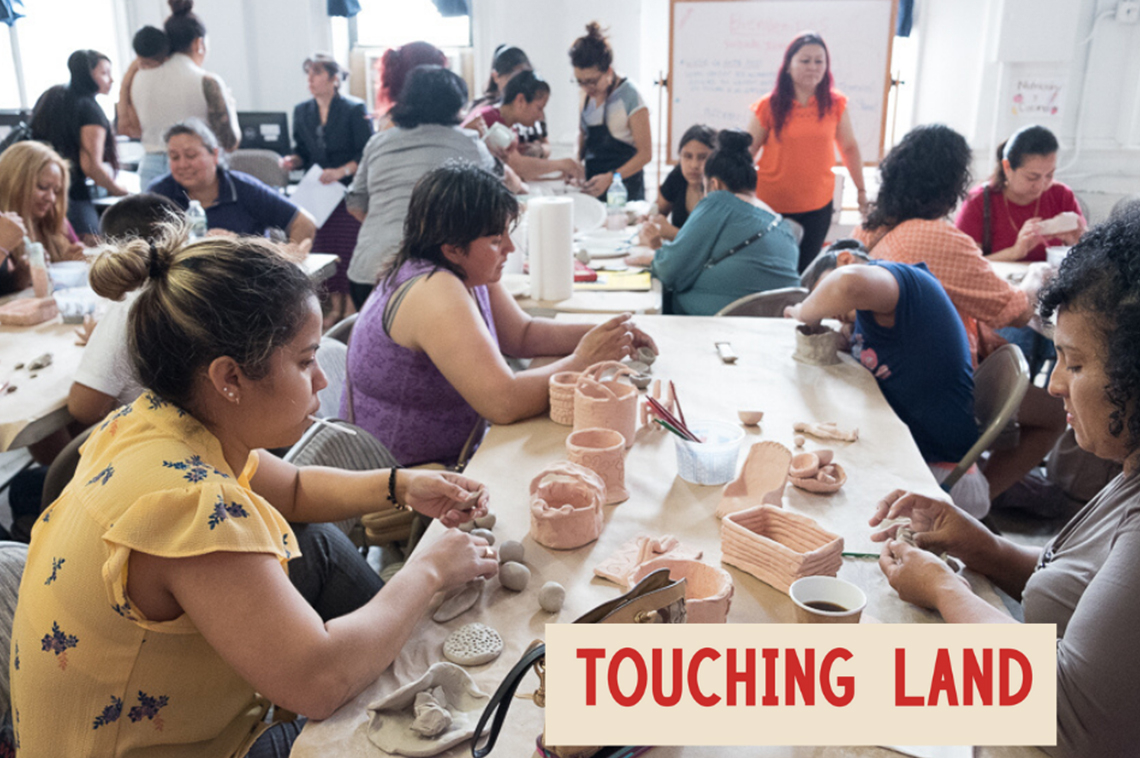
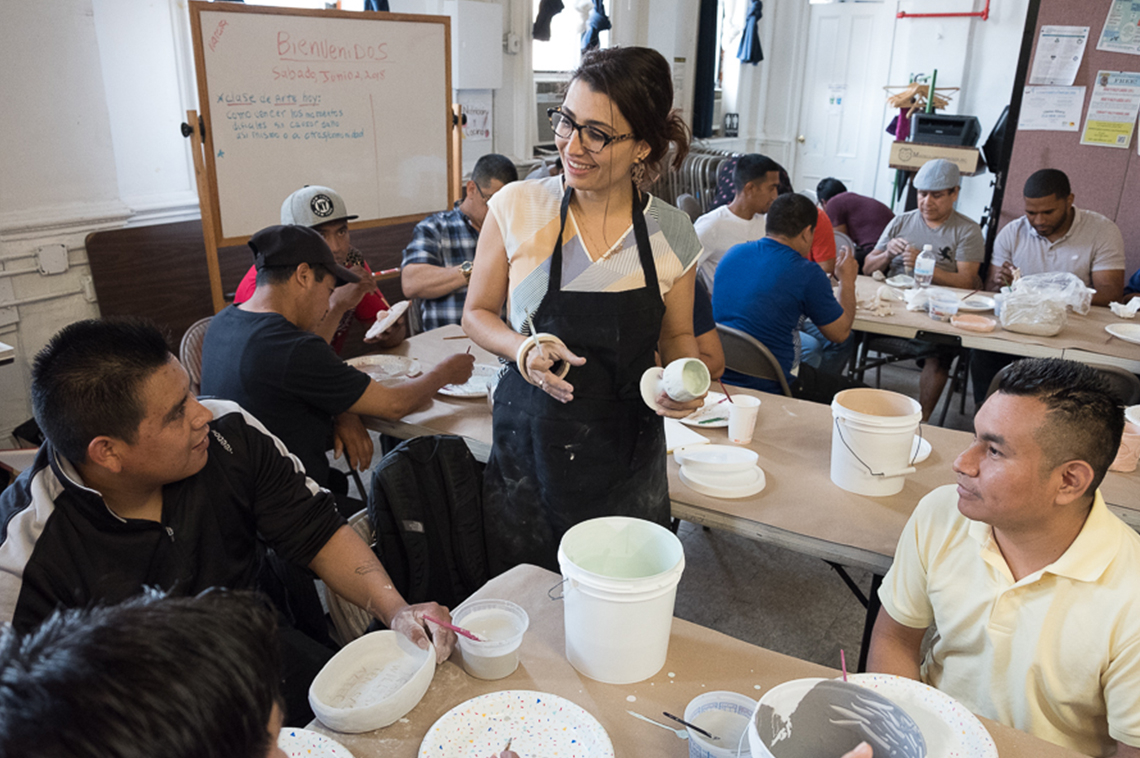
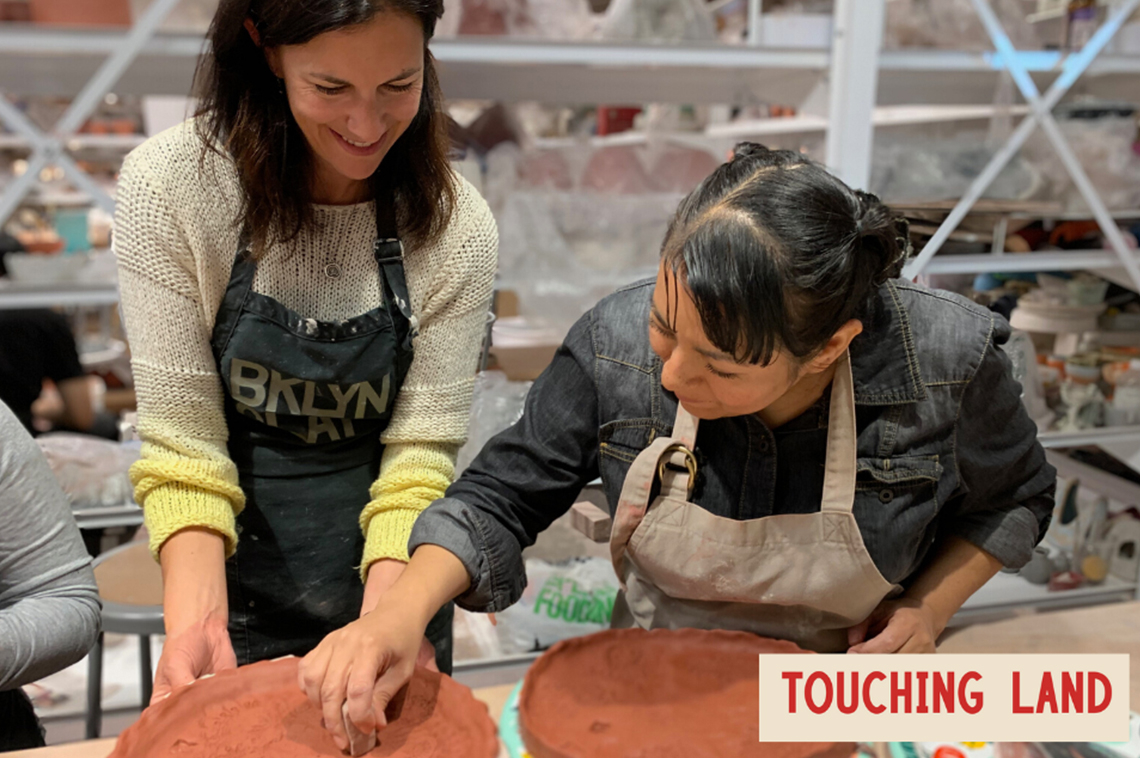
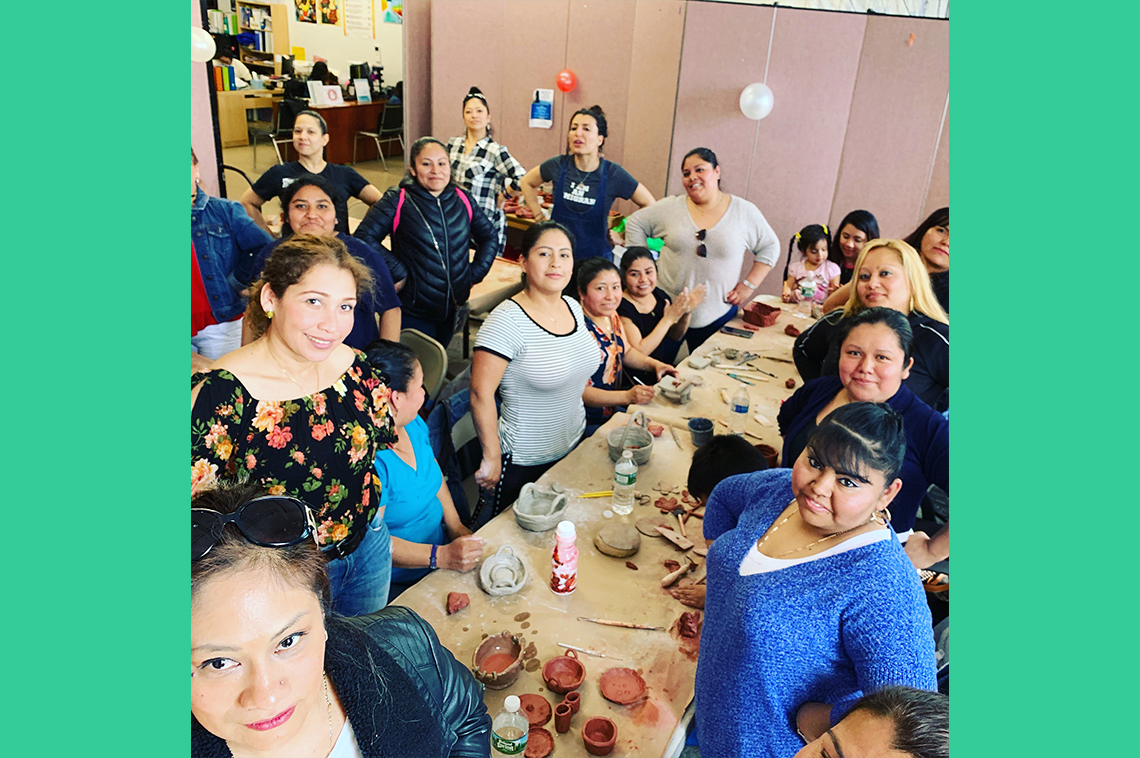
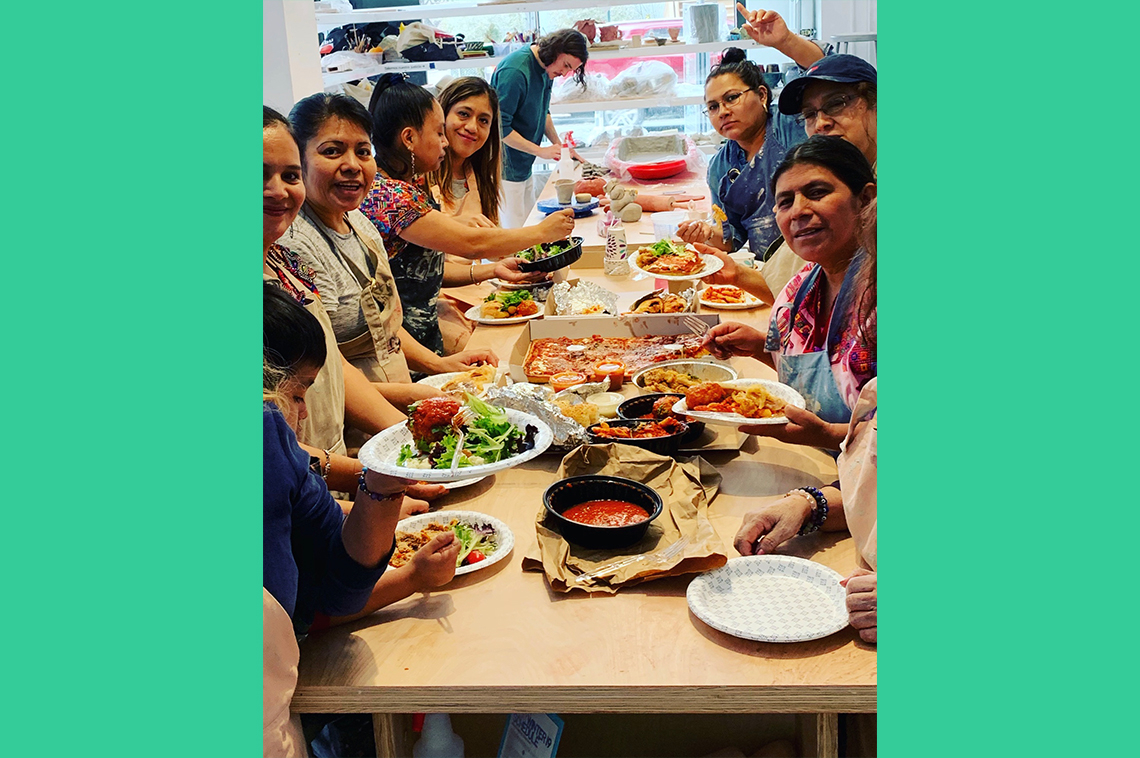
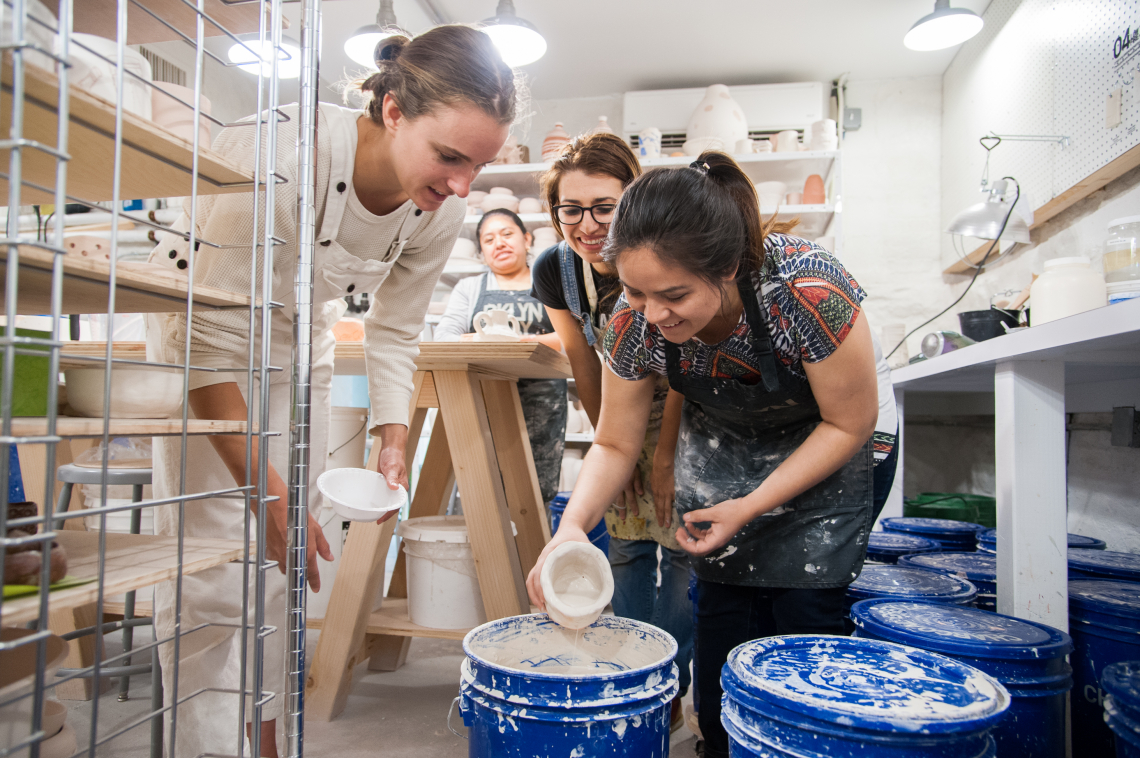
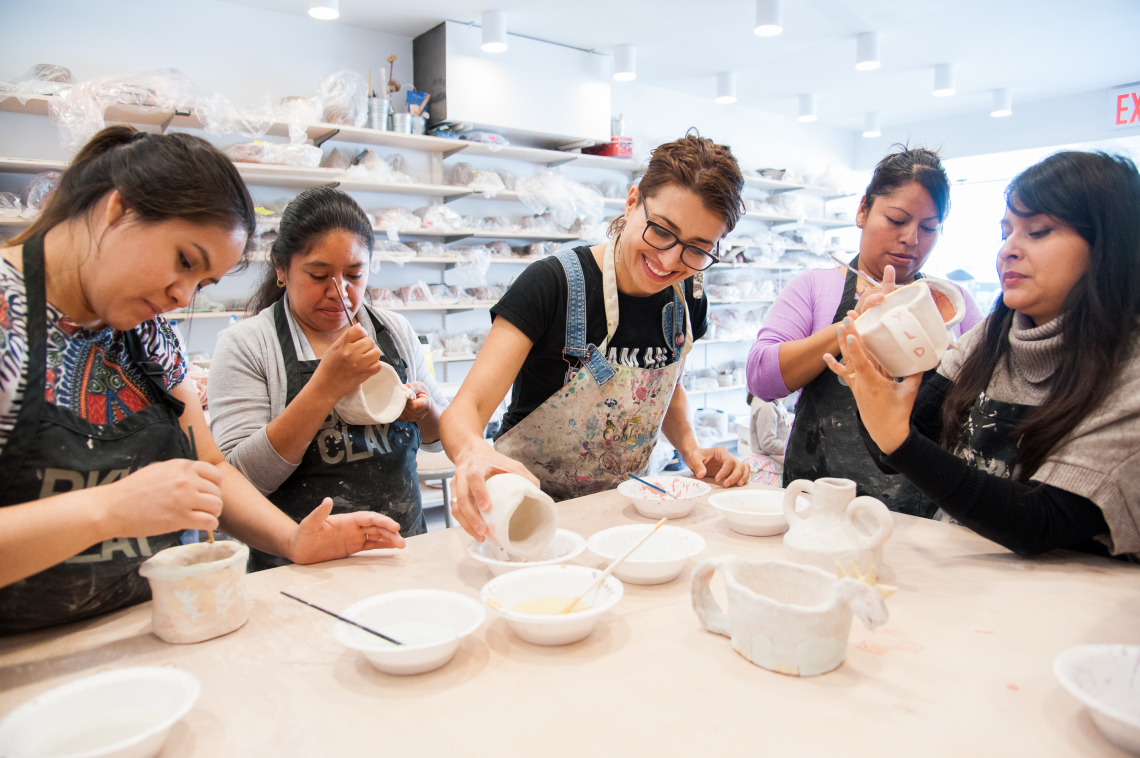
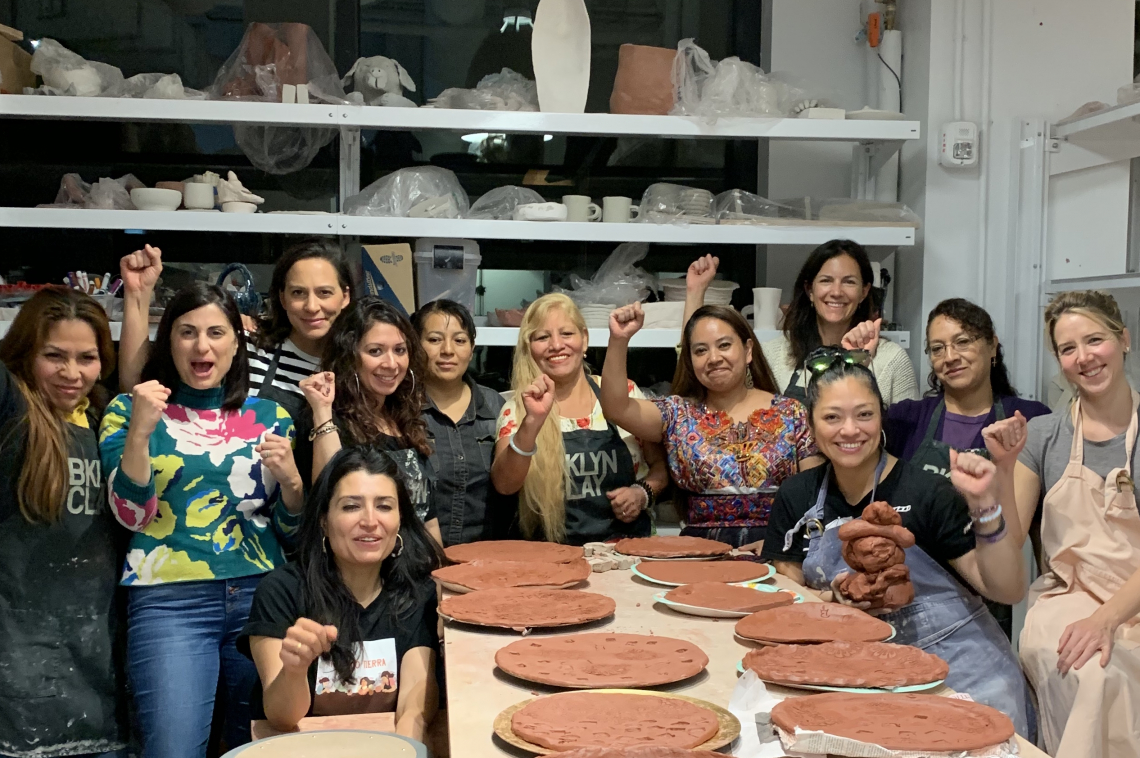
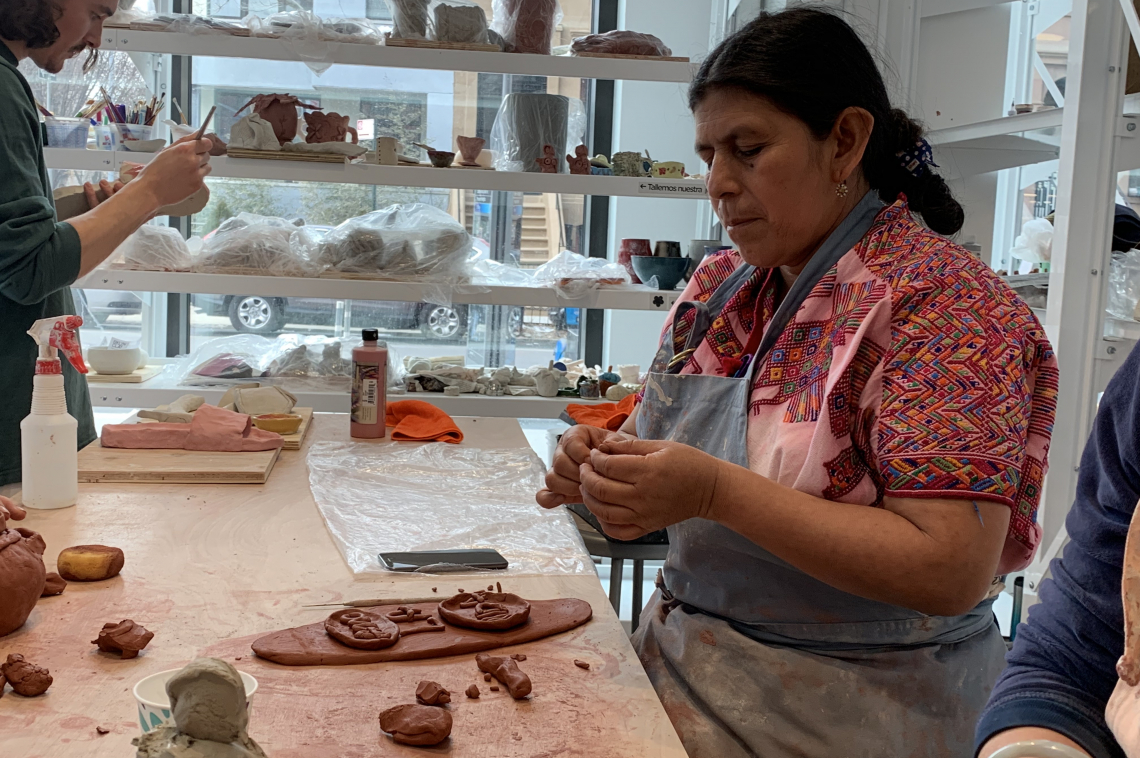
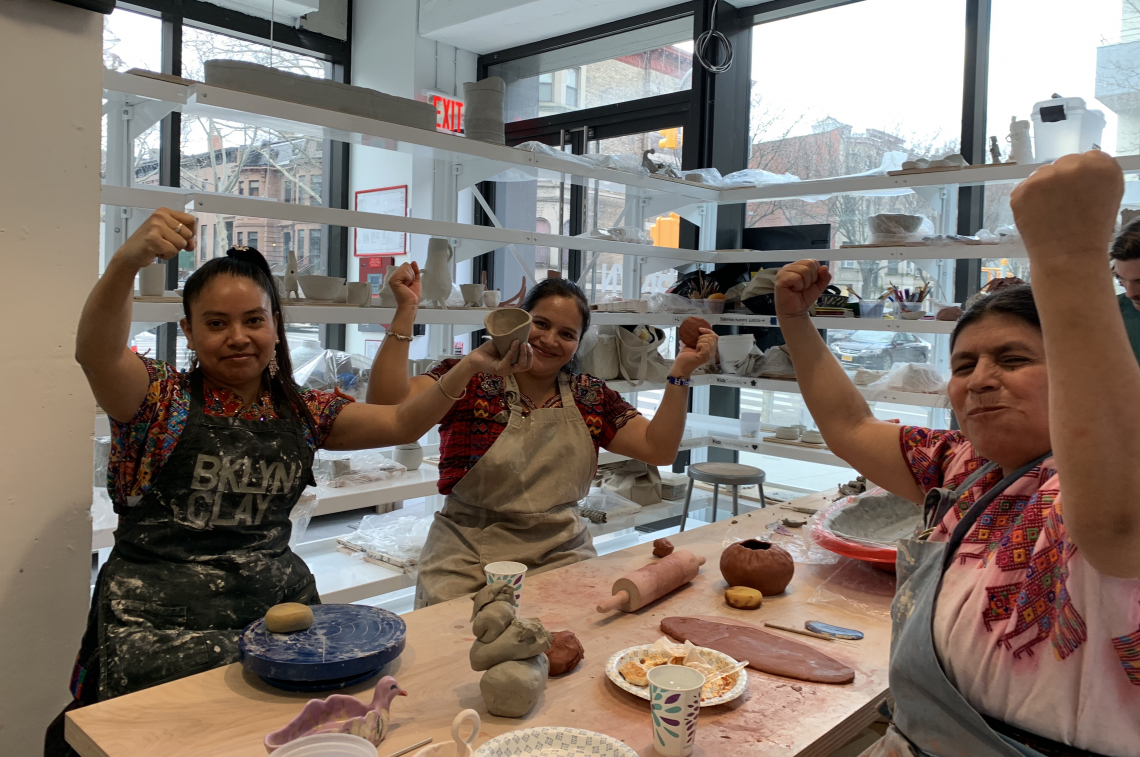
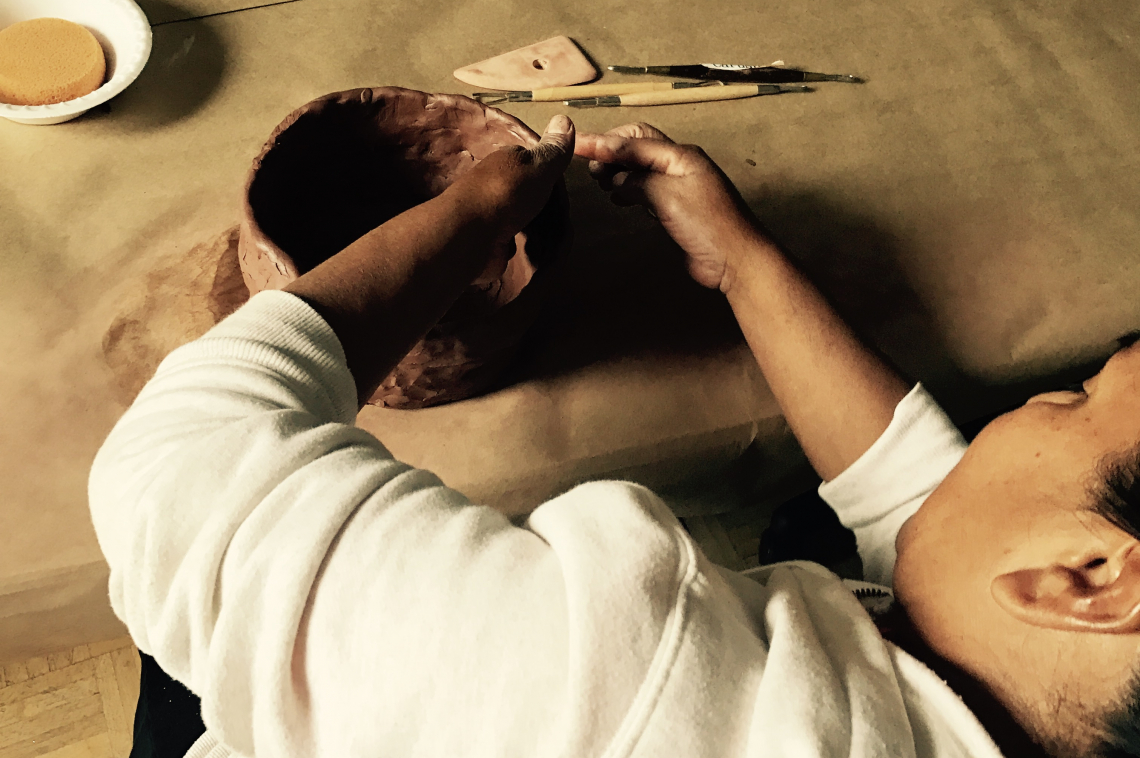
Carolina Rubio-MacWright is a Bogota, Colombia-born artist, immigration lawyer, and activist, currently based in Brooklyn, New York. She attended art school and law school in the US, and has always been active in her local immigrant community. Her experiences as an attorney in NYC, Miami, and Oklahoma have opened her eyes to inequities in our laws, racial power struggles, and how the two intersect.
Believing that art is often the most powerful vehicle for explaining legal inequities, Carolina has mixed her law and art experiences into performances, installations, and workshops that serve a dual purpose: to empower vulnerable communities and to educate more powerful ones.
Most recently, Carolina has been developing a series of workshops that combine legal rights empowerment with hands-on experimental art mediums. These workshops have grown to become a platform where unlikely communities mix to share their stories, understand their strength, and re-sculpt their political, social, and cultural barriers.
Carolina wrote the following essay about her experiences organizing and leading the Know Your Rights clay workshops, a project she began four years ago.
***
In my years as an immigration attorney, I have witnessed how few immigrants know their rights. This ignorance can be catastrophic when coupled with the fear that the undocumented population has to carry on a daily basis. Their encounters with authority figures can easily lead to deportations and to the breaking apart of mixed-status families.
The destruction of stable, loving families is happening in the US every day as a result of simple encounters with police officers. In fact, New York City Comptroller Scott Stringer recently released data that shows our city is currently experiencing a hike in deportations by ICE officers: a 150 percent increase between the final year of the Obama administration and the first full year of the Trump administration.
There’s a palpable urgency I feel when wanting to make sure my community has all the tools they need to ensure their safety. I had participated in multiple “know your rights” events, but they all seemed incredibly ineffective: the audience would leave with more questions than answers, and the overall feeling in the air was fear. The format in which information was delivered was not effective in making sure immigrants understood their rights. When trying to convey knowledge, I’ve learned, you have to really understand your audience so that you can be as effective as possible—much like you would a jury in a court trial.
An issue that keeps coming up in my work is the fact that immigrants don’t know their value in our community. Immigrants have been vilified and kept in the shadows for far too long, in large part because so much of our economy depends on the constructs of systemic racism and cheap labor. This continuous narrative affects immigrants’ collective self-worth and overall power to thrive.
Three years ago, when Cayla Casciani, the Space to Connect Director at Chashama, approached me and asked me to design a workshop for immigrants, it was the perfect opportunity to come up with a truly effective event that would combine therapy, art, legal knowledge, and empowerment. I had carte blanche with materials and formats, so I did my research. That’s when clay spoke to me as the ideal non-frustrating, therapeutic, and easy-to-connect-with creative medium for such a project.
Clay is playful, recyclable, and unpredictable—like life—and most of all, it is incredibly forgiving. Making sure the material was forgiving was important because I wanted students to see beauty in imperfection and in their ability to rebuild and mold clay the same way we do our own lives. I wanted students to discover the power of their minds and their hands, so that they could see how strong they really are, and recognize that they have legal rights, human rights, and the ability to fight for their freedom.
"Making sure the material was forgiving was important because I wanted students to see beauty in imperfection and in their ability to rebuild and mold clay the same way we do our own lives."
The setting for the classes had to be a space where immigrants are normally invisible—such as a beautiful clay studio. BKLYN CLAY is currently our host; when we started the workshops a few years ago, they were in their original studio nestled in Sunset Park, Brooklyn: a beautiful area that is predominantly an immigrant neighborhood. Three years in, their studio setting is where many of our important partnerships have been built.
From the moment students walk into this beautifully designed modern space, they are challenged to understand their power and their worth. In the very first class ever, one of the first comments had the biggest impact on all of us. A student said, “The last time I touched land this way was when I crossed the border barefoot.” After that comment, other people opened up about their memories of playing in the dirt, the struggle of being away from family, and the constant fear they carry. That was the moment I was able to see the power of clay and of putting a community together in a visible and safe space.
The workshops include PowerPoint presentations that are at times funny and light, but that also contain serious information. For example, there is a segment in which the students are handed various warrants and they have to decide which ones are valid and which ones are not. The students are also challenged to create an emergency plan for themselves and their kids, which is never an easy conversation, but this relaxed and supportive setting lets them realize that being a victim is not an option and being proactive is where true power lies.
Part of living in the shadows is feeling like you are powerless when advocating for your own salary, so there is a segment of the workshop where negotiation tools are shared. Sometimes students are given an opportunity to roleplay and ask for a raise or better working conditions, with BKLYN CLAY staff or other volunteers acting in the opposing roles.
The workshops have evolved through the years; they have not been smooth sailing, and there’s been learning at every corner. At one point, I remember having five kids in the workshop and I found some students unable to work on the clay because they had their one-year-old in their lap. I had to improvise and offer to hold the baby while I taught. The next class, everyone just organically took turns passing the babies around. It was a testament to community and how we are stronger together, while being gentle with our limitations.
"This relaxed and supportive setting [a clay studio] lets them realize that being a victim is not an option and being proactive is where true power lies."
My favorite part of the workshops is when students receive their finished piece and get to take it home, along with their “know your rights” card. There is inevitably at least one student who breaks down and cries as they are overwhelmed with emotion. Most of the time, it is not so much about the final piece, but about the significance of the time spent: the idea that there was a commitment, there was hard work, and now there is something tangible resulting from that great effort in the shape of an object and a personal transformation.
The impact of the program has come in various ways, from students organizing and starting initiatives to leaving abusive husbands, to approaching a boss for a raise, to feeling calmer after being a victim of the Zero Tolerance policy at the border. Ultimately, students leave the studio knowing what to do if they are stopped by a police officer. They leave with an emergency plan of action. Most of all, they leave knowing their worth as they build self-esteem and community connections. These connections grow as word of mouth takes over and more participants show up for workshops and for their neighbors in a time of need.
Last year, as I saw pondering on our impact I realized this is a community movement, not just a one time workshop. That’s when workshops became part of a bigger initiative called TOUCHING LAND, currently fiscally sponsored and awaiting our 501(c)(3) status.
Hands on experiential arts is the best tool for community building, because it not only has that equalizing and relaxing power, but it also opens us up to see our own humanity which has the power to shatter walls and cages amongst us. This is exactly the type of courageous community building that our country needs right now.
For maximum community impact, we have grown to recognize two different tracks of workshops: our immigrant empowerment workshops and the building bridges workshops. The building bridges workshops, brings empowered immigrants (alumni of our program) and community from different walks of life, who come together to build something as one. Clay will act as a binding and equalizing agent as participants share stories of hardship, triumph, and the power we have to make policy changes that support our community. The impact of these workshops is tangible and so uplifting. Last year, we had a participant woman feel so inspired by other participants, that she started a local campaign which hopes to advocate for fair wages, sick paid days and holidays for domestic workers!
We are getting ready to launch our new cooking workshops in May during Design Week New York. We have been working with different chefs so that the program can be streamlined and handed over to other kitchens and chefs around the U.S. Our dream is to expand our workshops to places like Oklahoma and Florida where people can spend their whole lives not knowing that within a three-minute drive lives a whole community of invisible immigrants who are connected to their own daily lives, and who hold the same values and dreams they do. Healing, beautiful spaces like clay studios and kitchens are the perfect platform for connecting and dissolving the unnecessary walls of fear that have been growing so rapidly in our country in the past few years.
We are excited to grow our programs in meaningful new directions, to use our hands in artistic ways to empower our communities, and to forge innovative pathways to change so that empathy and love can grow.
Visit Carolina’s website to learn more about her, and her amazing work and check out this segment 'Women Form Diverse Sisterhood Brought Together by Pottery' on the Today show.





